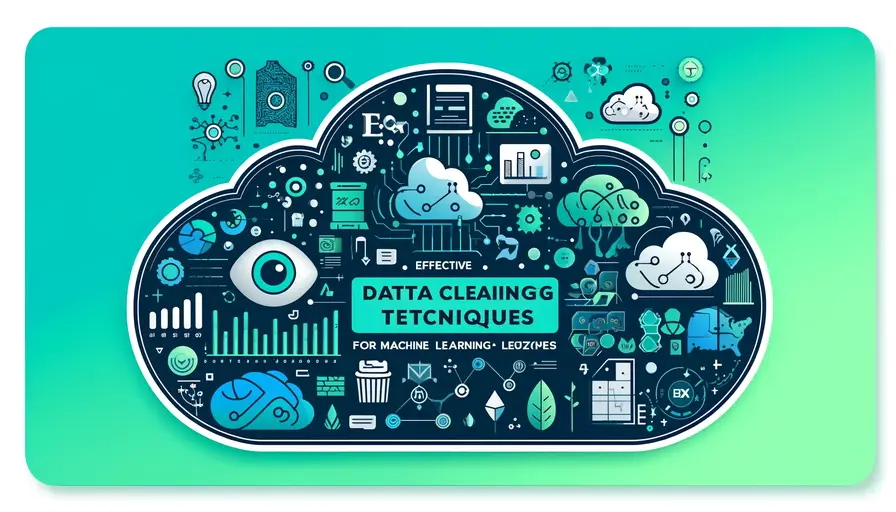
Strategies to Safeguard Machine Learning Models from Theft

- Implement Strong Encryption Techniques
- Use Secure Authentication Methods
- Regularly Update and Patch Software
- Implement Access Controls
- Use Watermarking Techniques
- Implement Robust Monitoring
- Use Hardware-Based Security
- Implement Network Security Measures
- Regularly Backup Models
- Establish Legal Agreements
Implement Strong Encryption Techniques
Data Encryption
Strong encryption techniques are essential for protecting the sensitive data used in machine learning models. Encrypting the data ensures that even if unauthorized individuals gain access, they cannot read or misuse the information. This is particularly important for datasets containing personal or proprietary information. Encryption transforms readable data into an unreadable format, which can only be deciphered with the correct decryption key.
There are various encryption methods available, including symmetric key encryption, asymmetric key encryption, and hashing. Symmetric key encryption uses the same key for both encryption and decryption, making it faster but requiring secure key management. Asymmetric key encryption uses a pair of keys (public and private) for encryption and decryption, providing enhanced security but at the cost of increased computational overhead.
Encryption in Practice
Implementing encryption requires a careful approach to ensure it does not impact the performance of machine learning models. Encryption should be applied to both data at rest and data in transit. For data at rest, disk encryption or database encryption can be used, while for data in transit, secure communication protocols like TLS (Transport Layer Security) are recommended.
Here’s an example of encrypting data using Python’s cryptography library:
 Effective Data Cleaning Techniques for Machine Learning on edX
Effective Data Cleaning Techniques for Machine Learning on edXfrom cryptography.fernet import Fernet
# Generate a key for encryption
key = Fernet.generate_key()
cipher_suite = Fernet(key)
# Sample data
data = "Sensitive data for ML model".encode()
# Encrypt the data
encrypted_data = cipher_suite.encrypt(data)
print("Encrypted Data:", encrypted_data)
# Decrypt the data
decrypted_data = cipher_suite.decrypt(encrypted_data)
print("Decrypted Data:", decrypted_data.decode())This code demonstrates how to encrypt and decrypt data, ensuring its security during storage and transmission.
Use Secure Authentication Methods
Secure Authentication
Secure authentication methods are vital to ensure that only authorized users can access machine learning models. Implementing multi-factor authentication (MFA) can significantly enhance security by requiring users to provide two or more verification factors. MFA combines something the user knows (password), something the user has (security token), and something the user is (biometric verification).
In addition to MFA, using strong, unique passwords and regularly updating them can prevent unauthorized access. Passwords should be stored using secure hashing algorithms like bcrypt or Argon2, which make it difficult for attackers to reverse-engineer the original password from the hash.
Authentication in Practice
Securing access to machine learning models also involves integrating with identity and access management (IAM) systems. IAM systems provide centralized control over user authentication and authorization, ensuring that access policies are consistently enforced across all systems.
 Machine Learning: Math Background Needed?
Machine Learning: Math Background Needed?Here’s an example of implementing multi-factor authentication in a Python web application using the authy library:
from authy.api import AuthyApiClient
# Initialize Authy client
authy_api = AuthyApiClient('your_api_key')
# Send token to user's phone
authy_api.phones.verification_start(phone_number='+1234567890', country_code=1, via='sms')
# Verify the token
verification = authy_api.phones.verification_check(phone_number='+1234567890', country_code=1, verification_code='123456')
if verification.ok():
print("Authentication successful")
else:
print("Authentication failed")This code demonstrates how to send and verify a token, implementing a basic form of MFA.
Regularly Update and Patch Software
Staying Informed About Updates
Regularly updating and patching the software and frameworks used in machine learning models is crucial to prevent vulnerabilities. Software vendors frequently release updates that address security flaws and improve functionality. Staying informed about these updates ensures that your systems are protected against known threats.
Subscribing to security bulletins and alerts from software vendors and the broader cybersecurity community can help keep you informed about the latest vulnerabilities and patches. Additionally, using automated tools to manage updates can streamline the process and ensure that patches are applied promptly.
 Is Machine Learning a Paradigm Shift from Traditional Programming?
Is Machine Learning a Paradigm Shift from Traditional Programming?Testing and Backups
Before applying updates, it’s important to test them in a controlled environment to ensure they do not disrupt the operation of machine learning models. This involves setting up a staging environment that mirrors the production system, where updates can be tested for compatibility and stability.
Here’s an example of using Python to check for and apply updates in a controlled environment:
import os
# Function to check for updates
def check_for_updates():
# Simulated check for updates (e.g., from a package manager or software vendor)
updates_available = True
return updates_available
# Function to apply updates
def apply_updates():
os.system('sudo apt-get update && sudo apt-get upgrade -y')
# Check for updates and apply them if available
if check_for_updates():
print("Updates available. Applying updates in staging environment.")
apply_updates()
else:
print("No updates available.")This code demonstrates a simplified approach to checking for and applying updates.
Implement Access Controls
Importance of Access Controls
Access controls are crucial to restrict who can modify or access machine learning models. By defining and enforcing access policies, organizations can ensure that only authorized personnel have access to sensitive models and data. Access controls can be implemented at various levels, including file system permissions, database access controls, and application-level restrictions.
 Nakul Verma's Impact on Machine Learning
Nakul Verma's Impact on Machine LearningImplementing role-based access control (RBAC) allows organizations to assign permissions based on user roles, ensuring that users only have access to the resources necessary for their job functions. This minimizes the risk of unauthorized access and reduces the attack surface.
Monitoring Access
Regularly reviewing and updating access privileges is essential to maintaining security. As personnel changes occur, access controls should be adjusted to reflect the current organizational structure. Additionally, monitoring access logs and suspicious activities can help detect and respond to potential security incidents.
Here’s an example of implementing RBAC in a Python application using the rbac library:
from rbac.acl import ACL
# Initialize ACL
acl = ACL()
# Define roles and permissions
acl.add_role('admin')
acl.add_role('user')
acl.add_permission('view_model')
acl.add_permission('modify_model')
# Assign permissions to roles
acl.allow('admin', 'view_model')
acl.allow('admin', 'modify_model')
acl.allow('user', 'view_model')
# Check access
if acl.is_allowed('user', 'modify_model'):
print("Access granted")
else:
print("Access denied")This code demonstrates how to define roles and permissions, and check access in an application.
 ANN's Role in Machine Learning History: Significance Explored
ANN's Role in Machine Learning History: Significance ExploredUse Watermarking Techniques
Watermarking for Security
Watermarking techniques can be used to track and identify unauthorized use of machine learning models. Digital watermarks are unique identifiers embedded into the models or data that are difficult to remove without degrading the quality. Watermarking allows organizations to prove ownership and trace the source of any unauthorized copies.
Watermarks can be inserted into the weights of neural networks or into the output of the models. For instance, slight perturbations can be added to the model’s parameters that do not affect its performance but can be detected to verify the model’s authenticity. This provides a robust mechanism for protecting intellectual property.
Implementing Watermarking
Implementing watermarking requires careful consideration to ensure it does not impact the model’s performance. The watermark should be resistant to attacks and tampering, making it difficult for adversaries to remove or alter it. This involves embedding the watermark in a way that is both invisible and robust.
Here’s an example of adding a simple watermark to a neural network model in Python:
 The Role of Linear Regression in Machine Learning Predictions
The Role of Linear Regression in Machine Learning Predictionsimport numpy as np
from keras.models import Sequential
from keras.layers import Dense
# Sample model
model = Sequential()
model.add(Dense(10, input_dim=5, activation='relu'))
model.add(Dense(1, activation='sigmoid'))
# Watermark: Add slight perturbations to the weights
def add_watermark(model, watermark):
for layer in model.layers:
weights = layer.get_weights()
if weights:
weights[0] += watermark
layer.set_weights(weights)
# Generate watermark
watermark = np.random.normal(0, 0.01, size=model.layers[0].get_weights()[0].shape)
# Apply watermark
add_watermark(model, watermark)
print("Watermark added to model")This code demonstrates how to add a simple watermark to a neural network model.
Implement Robust Monitoring
Monitoring Systems
Robust monitoring and logging systems are essential to detect any suspicious activity related to machine learning models. Continuous monitoring helps identify potential security breaches and respond to incidents promptly. Monitoring systems should track access to models, changes in model performance, and any anomalies in data usage.
Logs should be maintained for all access and modifications, providing a detailed record of activities. These logs can be analyzed to detect patterns indicative of unauthorized access or tampering. Implementing automated alerts for suspicious activities can enhance the security posture and enable quick incident response.
Implementing Monitoring
Effective monitoring involves integrating with existing security information and event management (SIEM) systems. SIEM systems provide real-time analysis of security alerts and can help correlate events from multiple sources. By integrating machine learning model monitoring with SIEM, organizations can gain a comprehensive view of their security landscape.
Here’s an example of logging access to a machine learning model in Python:
import logging
# Configure logging
logging.basicConfig(filename='model_access.log', level=logging.INFO)
# Function to log access
def log_access(user, action):
logging.info(f"User: {user}, Action: {action}")
# Log sample access
log_access('user1', 'view_model')
log_access('user2', 'modify_model')
print("Access logged")This code demonstrates how to log access to a machine learning model.
Use Hardware-Based Security
Secure Enclaves
Hardware-based security measures such as secure enclaves or trusted execution environments (TEEs) can protect machine learning models. Secure enclaves provide a hardware-protected area of memory that ensures sensitive data and computations remain confidential and secure. They protect against a wide range of attacks, including those from malicious software and physical tampering.
Trusted execution environments create an isolated execution environment that ensures code and data loaded inside are protected. This is particularly useful for executing sensitive machine learning algorithms and handling confidential data. By leveraging hardware-based security, organizations can enhance the protection of their models.
Implementing Hardware Security
Implementing hardware-based security requires using processors that support secure enclaves or TEEs. Intel SGX (Software Guard Extensions) and ARM TrustZone are examples of technologies that provide such capabilities. These technologies enable secure processing and storage of sensitive data and computations.
Here’s an example of using Intel SGX to secure a machine learning model:
import sgx_tcrypto
# Sample data
data = "Sensitive model parameters".encode()
# Encrypt data using SGX
encrypted_data = sgx_tcrypto.encrypt(data)
print("Encrypted Data:", encrypted_data)
# Decrypt data using SGX
decrypted_data = sgx_tcrypto.decrypt(encrypted_data)
print("Decrypted Data:", decrypted_data.decode())This code demonstrates how to use Intel SGX to encrypt and decrypt data, ensuring its security.
Implement Network Security Measures
Network Security
Network security measures are crucial to safeguard machine learning models from unauthorized access. Implementing strong access controls, encryption, firewalls, and intrusion detection systems (IDS) can protect against network-based attacks. Ensuring secure data transmission between systems is also essential to prevent interception and tampering.
Access controls should be enforced at the network level to restrict who can access the models and data. Encryption ensures that data remains secure during transmission, while firewalls and IDS provide protection against external threats. Regular security audits can help identify vulnerabilities and ensure compliance with security policies.
Secure Data Transmission
Secure data transmission involves using protocols like TLS to encrypt data sent over the network. This prevents unauthorized parties from intercepting and reading the data. Ensuring that all network communications are encrypted is essential for protecting sensitive information.
Here’s an example of setting up a secure server using Python’s ssl module:
import ssl
import socket
# Create SSL context
context = ssl.SSLContext(ssl.PROTOCOL_TLS_SERVER)
context.load_cert_chain(certfile='cert.pem', keyfile='key.pem')
# Create secure socket
secure_socket = context.wrap_socket(socket.socket(socket.AF_INET), server_side=True)
secure_socket.bind(('localhost', 443))
secure_socket.listen(5)
print("Secure server running...")This code demonstrates how to set up a secure server that uses TLS for encrypted communication.
Regularly Backup Models
Backup Strategies
Regularly backing up machine learning models and storing them securely is essential to prevent loss or theft. Backups ensure that models can be restored in case of data loss, corruption, or security incidents. Implementing automated backup solutions can streamline this process and ensure that backups are performed consistently.
Backups should be stored in a secure location, separate from the primary storage, to protect against physical damage or cyberattacks. Using encryption to protect backup data ensures that it remains secure, even if the backup storage is compromised.
Implementing Backups
Effective backup strategies involve regular scheduling, encryption, and verification of backups. Scheduling ensures that backups are performed at regular intervals, while encryption protects the data. Verification involves testing backups to ensure they can be successfully restored.
Here’s an example of creating a backup of a machine learning model using Python:
import pickle
import os
import shutil
# Sample model (replace with your actual model)
model = {'weights': [0.1, 0.2, 0.3]}
# Save model to file
with open('model.pkl', 'wb') as f:
pickle.dump(model, f)
# Create a backup
backup_dir = 'backups'
os.makedirs(backup_dir, exist_ok=True)
shutil.copy('model.pkl', os.path.join(backup_dir, 'model_backup.pkl'))
print("Model backed up successfully")This code demonstrates how to create a backup of a machine learning model.
Establish Legal Agreements
Protecting Intellectual Property
Establishing legal agreements and contracts is crucial to protect the intellectual property rights of machine learning models. Legal agreements can define the ownership, usage rights, and responsibilities of all parties involved. They provide a formal framework for protecting the models and ensuring that they are used in accordance with agreed-upon terms.
Contracts should include clauses that address confidentiality, non-disclosure, and intellectual property ownership. These clauses protect the models from unauthorized use and distribution, ensuring that the intellectual property rights are upheld. Legal agreements also provide a basis for recourse in case of disputes or breaches.
Implementing Legal Protections
To implement legal protections, organizations should work with legal experts to draft comprehensive agreements that cover all aspects of model protection. This includes confidentiality agreements with employees and partners, licensing agreements for third-party use, and terms of service for users.
Here’s an example of a simple confidentiality agreement template:
Confidentiality Agreement
This Confidentiality Agreement ("Agreement") is made and entered into by and between [Company Name] ("Disclosing Party") and [Recipient Name] ("Receiving Party").
1. Purpose. The purpose of this Agreement is to protect the confidential information of the Disclosing Party.
2. Confidential Information. "Confidential Information" means all information disclosed by the Disclosing Party to the Receiving Party, whether in written, oral, or other form, that is designated as confidential.
3. Obligations of Receiving Party. The Receiving Party agrees to:
a. Keep the Confidential Information confidential and not disclose it to any third party.
b. Use the Confidential Information only for the purpose for which it was disclosed.
4. Term. This Agreement shall remain in effect for a period of [Number] years from the date of disclosure.
5. Governing Law. This Agreement shall be governed by and construed in accordance with the laws of [State/Country].
IN WITNESS WHEREOF, the parties have executed this Agreement as of the date first above written.
[Company Name] [Recipient Name]
By: __________________________ By: __________________________
Name: ________________________ Name: ________________________
Title: _________________________ Title: _________________________
Date: _________________________ Date: _________________________This template can be customized to fit specific needs and legal requirements, ensuring that confidential information and intellectual property are adequately protected.
In conclusion, safeguarding machine learning models from theft involves implementing a multi-faceted approach that includes encryption, secure authentication, regular updates, access controls, watermarking, monitoring, hardware-based security, network security, backups, and legal agreements. By combining these strategies, organizations can protect their models and ensure their integrity and confidentiality.
If you want to read more articles similar to Strategies to Safeguard Machine Learning Models from Theft, you can visit the Education category.






You Must Read